Who were the ancient Goths, Visigoths and Ostrogoths?
The Goths sacked Rome in A.D. 410, but they also helped preserve Roman culture.
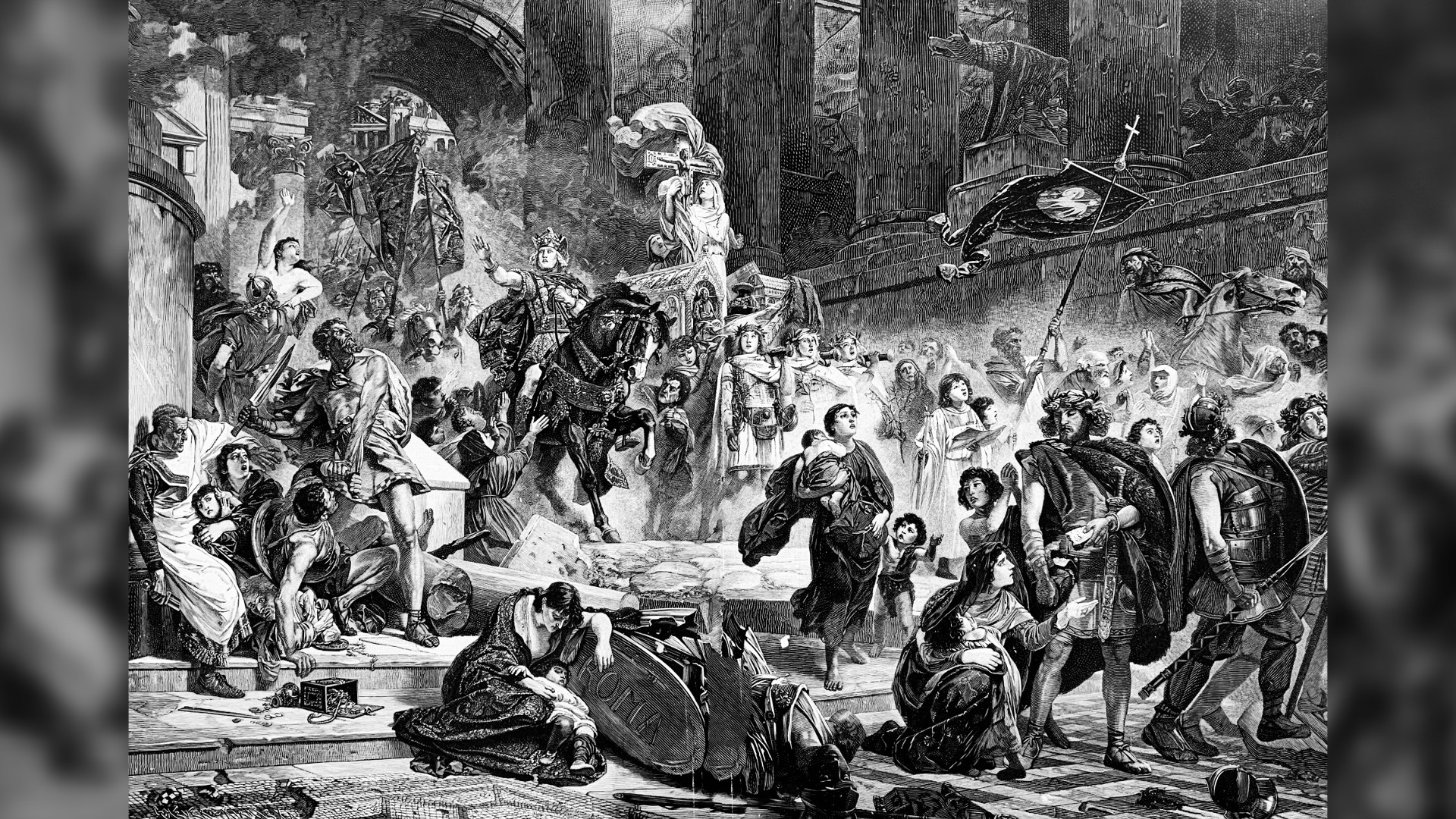
The Goths were a people who flourished in Europe throughout ancient times and into the Middle Ages. Sometimes called "barbarians," they are famous for sacking the city of Rome in A.D. 410. After the Western Roman Empire diminished, two Gothic kingdoms rose: the short-lived Visigoths and the longer-lasting Ostrogoths.
The earliest surviving written records mentioning the Goths date back to the first century A.D. although their existence dates back further with some records suggesting that they migrated from Scandinavia wrote David Gwynn, Reader in Ancient and Late Antique History at Royal Holloway University of London, wrote in his book "The Goths: Lost Civilizations" (Reaktion Books, 2017).
Ironically, however, the Goths are often credited with helping to preserve Roman culture. After the sacking of Rome, a group of Goths moved to Gaul (in modern-day France) and Iberia and formed the Visigothic Kingdom, which would eventually incorporate Catholicism, Roman artistic traditions and other aspects of Roman culture. The last Gothic kingdom fell to the Moors in A.D. 711.
Today, the meaning of the word "Goth" has evolved beyond any direct relationship to the ancient Goths. The late Middle Ages saw the rise of a style of architecture characterized by large, imposing cathedrals and castles. The term "Gothic" was applied to the style as a critique, as the word, even at that time, was a synonym for "barbaric."

During the 18th and 19th centuries, a genre of dark, romantic literature called "Gothic fiction" flourished. Characterized by novels such as Bram Stoker's "Dracula," Mary Shelley's "Frankenstein" and the works of Edgar Allan Poe, the genre got its name from the Gothic locations in which the stories took place — for example, Dracula's dark, foreboding castle.
In modern times, "goth" has been used to describe a subculture with its own style of music, aesthetic and fashion. The dark, often-gloomy goth imagery was influenced by Gothic fiction, particularly horror movies.
Where did the ancient Goths come from?
The exact origin of the ancient Goths is a mystery. In the sixth century A.D., the writer Jordanes (who was likely Gothic himself) wrote a history of the Goths. He claimed that the Goths came from a cold island called Scandza, possibly in modern-day Scandinavia. When they would have lived there is unknown.
Get the world’s most fascinating discoveries delivered straight to your inbox.
"Now from the island of Scandza, as from a hive of races or a womb of nations, the Goths are said to have come forth long ago under their king, Berig by name," he wrote (translation by Charles Mierow). After a series of southward migrations, they found themselves living close to the borders of the Roman Empire.
Our knowledge of the Goths before they interacted extensively with the Romans is limited. They had a written language that made use of runic inscriptions. However, few of these inscriptions have been found, and those that survive are quite short. "Only a few 'Gothic' runic inscriptions have survived, on objects which were found in modern-day [Romania] and Hungary," Tineke Looijenga, a now-retired researcher at the University of Groningen in the Netherlands, wrote in her book "Texts and Contexts of the Oldest Runic Inscriptions" (Brill, 2003).
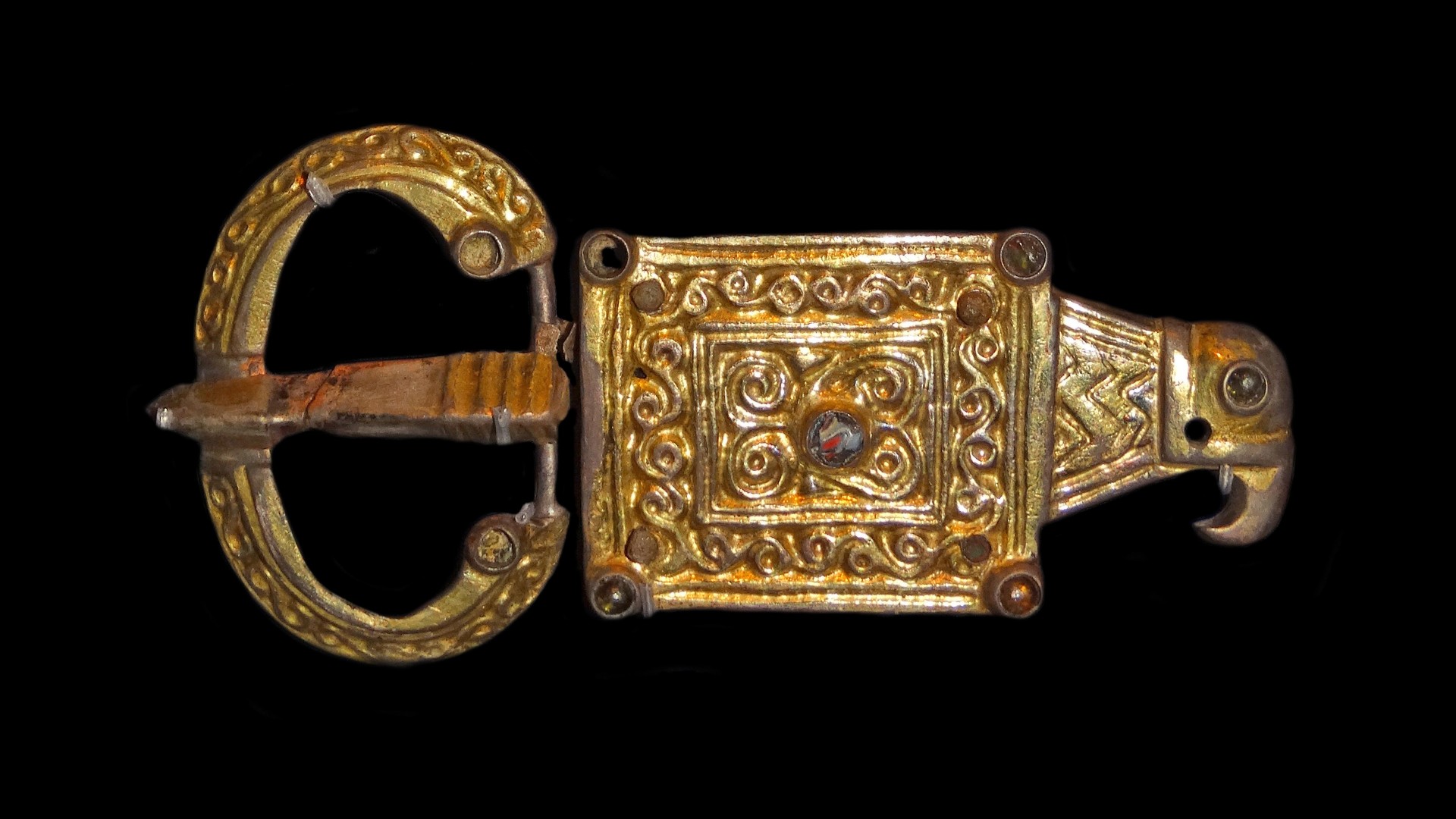
Jordanes claimed that, prior to the Goths' conversion to Christianity in the fourth century, their religion included the "veneration of heroic ancestors" and the "worship of a god of war" whom the Romans associated with the god Mars, wrote Gwynn. Jordanes also claimed that the Goths hung human arms from trees in the war god's honor and performed human sacrifices of captives.
The Goth's history before they came into contact with the Roman Empire is hazy. After they moved into the empire they adopted some Roman customs - like Christianity and some of their arts and culture. After moving into the Roman Empire they also lived in cities and founded new kingdoms. Goth records suggest that at some point, prior to contact with Rome, they were more nomadic, migrating from Scandinavia.
Goths vs. Greeks
During the third century A.D., the Goths launched a series of invasions against Roman-controlled Greece. Fragments of a text discussing these attacks, written by the third-century Athens writer Dexippus, were discovered in the Austrian National Library and detailed in The Journal of Roman Studies in 2015.
Dexippus said the Roman emperor Decius (who reigned from A.D. 249 to 251) led the Roman army against the Goths but suffered a series of defeats, losing both territory and men. The text also tells of a battle between the Goths and Greeks that took place at the pass of Thermopylae. It's not clear when exactly the battle was fought but it was likely in the 250s or 260s. The Goth army was trying to reach Athens while a Greek force had fortified the pass in an attempt to stop them. The fragment ends before the outcome of the battle is known.
Goths' attacks on the Roman Empire
The Goths launched other raids in the third century A.D., into the Roman Empire. "The first known attack came in 238, when Goths sacked the city of Histria at the mouth of the river Danube," Peter Heather, a medieval history professor at King's College London, wrote in his book "The Goths" (Blackwell Publishers, 1996). "A series of much more substantial land incursions followed a decade later."
He noted that in A.D. 268, a massive expedition of Goths, along with other groups also called barbarians, broke into the Aegean Sea, wreaking havoc. They attacked a number of settlements, including Ephesus (a city in Anatolia inhabited by Greeks), where they destroyed a temple dedicated to the goddess Diana.
"The destruction wrought by this combined assault on land and sea were severe, and prompted a fierce Roman response," Heather wrote. "Not only were the individual groups defeated, but no major raid ever again broke through the Dardanelles."
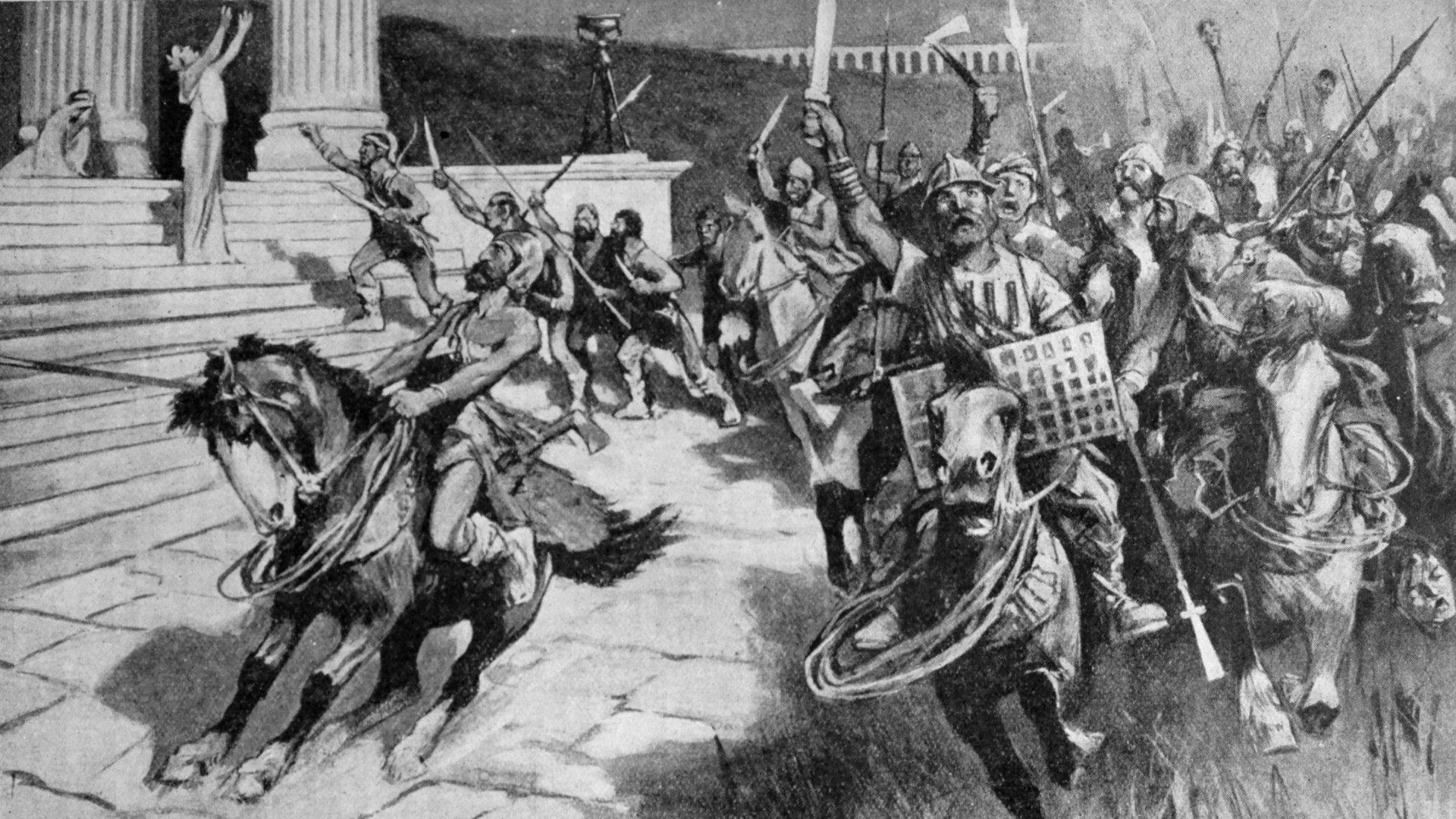
The Goths' tumultuous relationship with Rome would continue into the fourth century. While Goths served as Roman soldiers and trade took place across the Danube river, there was plenty of conflict.
Heather noted that a Gothic group called the Tervingi intervened in Roman imperial politics, supporting two unsuccessful claimants to the emperorship. In A.D. 321, they supported Licinius over Constantine, and in A.D. 365, they backed Procopius rather than Valens. In both instances, their strategies backfired, with Constantine and Valens launching attacks against the Tervingi after becoming emperor.
As contact with Rome intensified, a form of Christianity known as Arianism spread among the Goths. "In the 340s, the Arian Gothic bishop Ulfilas or Wulfila (d. 383) translated the Bible into the Gothic language in a script based chiefly upon the uncial Greek alphabet and said to have been invented by Ulfilas for the purpose," Robin Sowerby, formerly a senior lecturer in English studies at the University of Stirling in Scotland, wrote in an article in the book "A New Companion to the Gothic" (Wiley, 2012).
In time, the Goths would adopt the Catholic form of Christianity practiced in Rome.
Goths and the Huns
This complicated relationship between the Romans and Goths would be forever altered with the appearance of a new group, called the Huns, north of the Danube around A.D. 375. The Huns pushed the Goths into Roman territory.
The Goths, seeking refuge among the Romans, were treated poorly. Lacking food, they were forced to sell their children into slavery at humiliating prices. "When the barbarians after their crossing were harassed by lack of food, those most hateful [Roman] generals devised a disgraceful traffic; they exchanged every dog that their insatiability could gather from far and wide for one slave each, and among these were carried off also sons of the chieftains," wrote Ammianus Marcellinus, a Roman soldier and historian who lived in the fourth century A.D. (from the book Ammianus Marcellinus: with an English translation by John C. Rolfe, W. Heinemann, 1935).
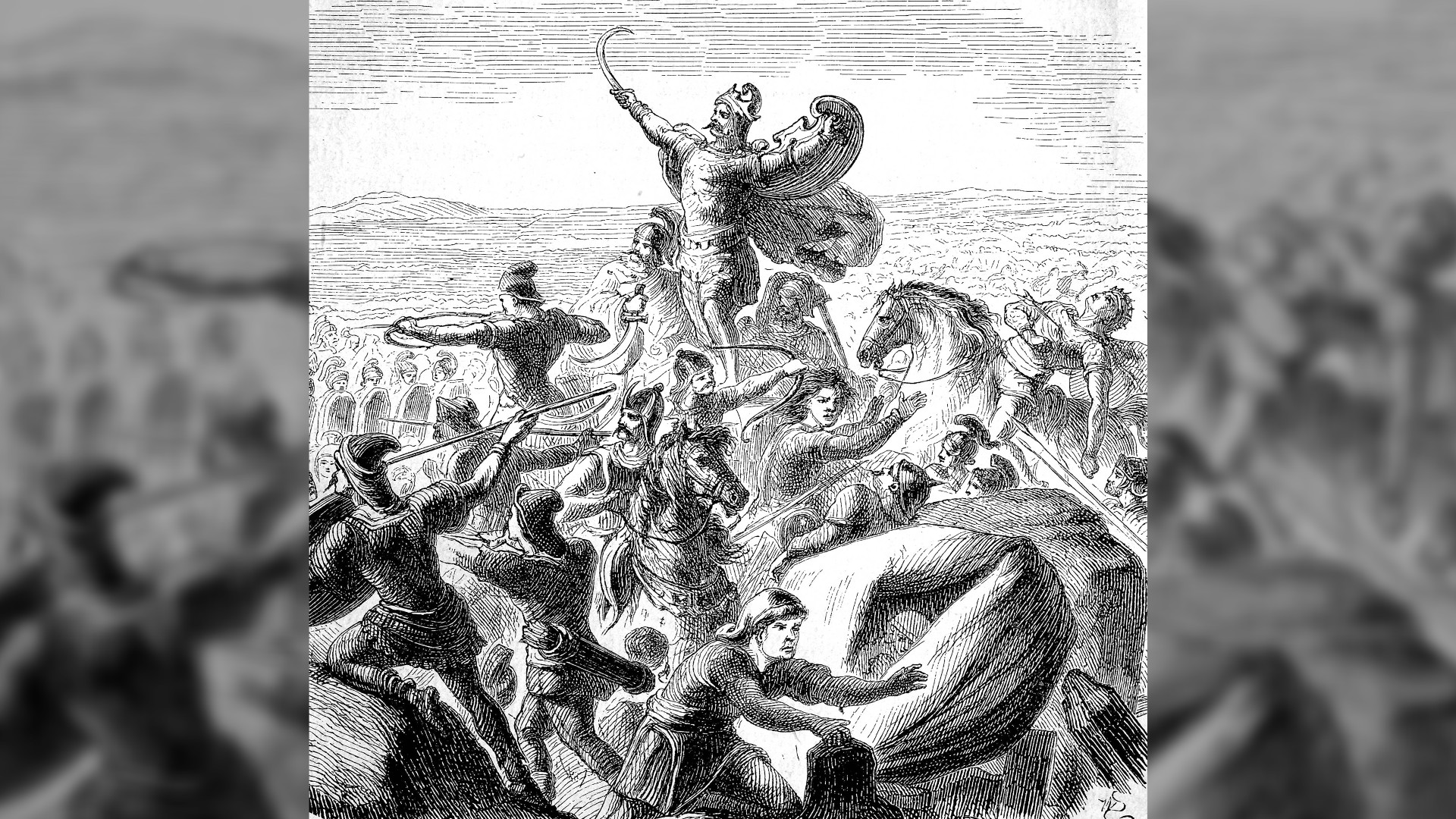
After being refused entry to the city of Marcianople (now in modern-day Bulgaria), the Goths revolted, roaming across the Balkans and plundering Roman towns.
Emperor Valens, who ruled the eastern half of the Roman Empire, personally led an army into the Balkans to subdue the Goths. On Aug. 9, 378, this army engaged the Goths near the city of Adrianople (also called Hadrianopolis). Valens underestimated the size of the Gothic force. As a result, his army was outflanked by the Goths and annihilated, along with the emperor himself.
"Just when it first became dark, the emperor being among a crowd of common soldiers, as it was believed — for no one said either that he had seen him, or been near him — was mortally wounded with an arrow, and, very shortly after, died, though his body was never found," Marcellinus wrote (translation by C.D. Yonge).
Valens' successor, Theodosius, made a treaty with the Goths that lasted until his death in A.D. 395.
Rise of Alaric
After A.D. 395, the treaty with Rome fell apart. A Gothic leader named Alaric rose to preeminence, leading the Goths into battle against both the Eastern and Western halves of the Roman Empire. The conflict that followed was complicated. Alaric wanted to make a deal that would give the Goths under his command good farmland and monetary rewards. He undertook raids to pressure the Romans.
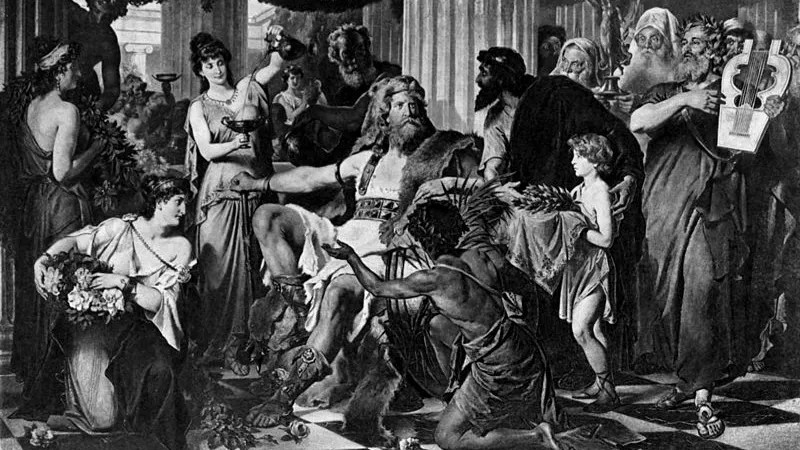
Heather wrote that by A.D. 403, Alaric was in the Balkans, becoming an "outlaw rejected by both halves of the Empire." An attempt by Alaric to move the Goths into Italy had failed, and there had been a massacre of the Gothic inhabitants of Constantinople in A.D. 400.
Fortunes changed for Alaric and the Goths when the Western Roman Empire began to crumble. The emperor Honorius faced rebellion among his army, and a usurper named Constantine III amassed territory in Britain and Gaul. In the wake of these problems, Honorius had his general, Flavius Stilicho, killed in A.D. 408.
Seeing weakness, Alaric advanced into Italy a second time, finding support from Stilicho's former supporters as well as runaway slaves. He was camped outside Rome by A.D. 410, using the city as a bargaining chip in an effort to get concessions from Honorius' government. After a series of unsuccessful negotiations, Alaric sacked the city on Aug. 24.
Two kingdoms: Visigoths and Ostrogoths
Alaric died a few months after the sacking of Rome. During the fifth century A.D., as the Western Roman Empire faded, two Gothic kingdoms rose.
"When Gothic power reached its zenith at the dawn of the sixth century, Gothic kingdoms dominated the map of the former western Roman Empire," Gwynn wrote. The Visigoth Kingdom formed in Iberia and southwest Gaul, while the Ostrogoths came to power in Italy.
In Italy, the Kingdom of the Ostrogoths formed by the end of the fifth century A.D., eventually dominating the entire peninsula. This kingdom was short-lived, however. Theodoric of Amal (who reigned from 493 to 526) ruled over it for much of its existence, using Ravenna, in northern Italy, as the capital. "Although his kingdom would crumble after his death Theodoric reigned successfully over Goths and Romans alike for more than three decades," Gwynn wrote. Not long after his death, Justinian I, emperor of the Byzantine Empire, launched a campaign against this kingdom, wiping it out and conquering Italy.
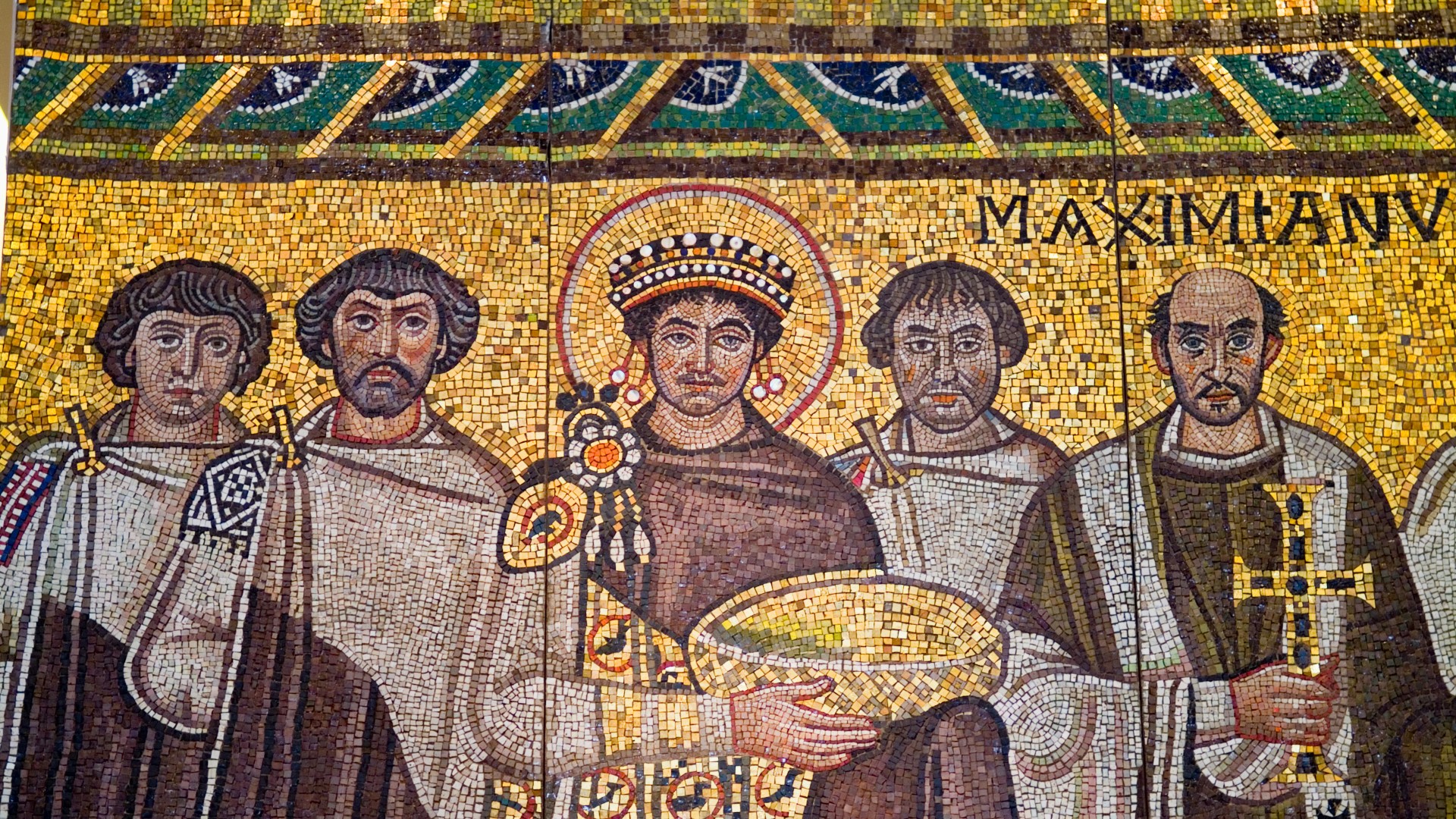
The Visigoth Kingdom lasted much longer, and its rulers would eventually govern this kingdom from its capital, Toledo, in what is now Spain. Central control of the kingdom was weak at times, and in 552, Justinian I took advantage of a Visigoth civil war to capture part of southern Iberia for the Byzantine Empire. The seventh century saw something of a cultural renaissance for the Visigoth Kingdom, in which art and writing flourished, Gwynn wrote.
During this renaissance, Roman art traditions continued. One of the most spectacular examples is a hoard of seventh-century artifacts found near Toledo in the 19th century. The stash includes gold crowns and crosses, as well as precious gems; it "confirms the artistry of the Visigothic court" and shows "a perfect blending of Roman traditions with those of the Byzantine East," Heather wrote in the book "The Visigoths from the Migration Period to the Seventh Century" (Boydell Press, 1999).
The Visigoth Kingdom survived until A.D. 711, when it fell to an invasion by the Moors. However, in northern Iberia, a small force led by Visigothic nobleman Don Pelayo held out, and he founded the Kingdom of Asturias in 718. They began the reconquest of Iberia, a process that would take nearly 800 years, Ingmar Söhrman, professor emeritus of languages and literature at the University of Gothenburg in Sweden, wrote in an article published in 2017 in the journal Romance Studies. The rulers who led the reconquest used Gothic heritage as a symbol of their legitimacy and right to reconquer Iberia, Söhrman wrote.
As Europe entered the Dark Ages, the Visigothic Kingdom would help preserve many aspects of Roman culture, including its religion and artistic traditions. It's ironic that the Goths, who sacked Rome in A.D. 410, helped the Roman culture endure.
Additional resources
- See photos of Gothic art at the Metropolitan Museum of Art.
- Learn more about the Gothic art style from the Victoria and Albert Museum.
- Take a look at the Google Arts & Culture section devoted to pre-Renaissance Gothic art.
Originally published on Live Science on March 18, 2016 and updated on August 8, 2022.

Owen Jarus is a regular contributor to Live Science who writes about archaeology and humans' past. He has also written for The Independent (UK), The Canadian Press (CP) and The Associated Press (AP), among others. Owen has a bachelor of arts degree from the University of Toronto and a journalism degree from Ryerson University.
